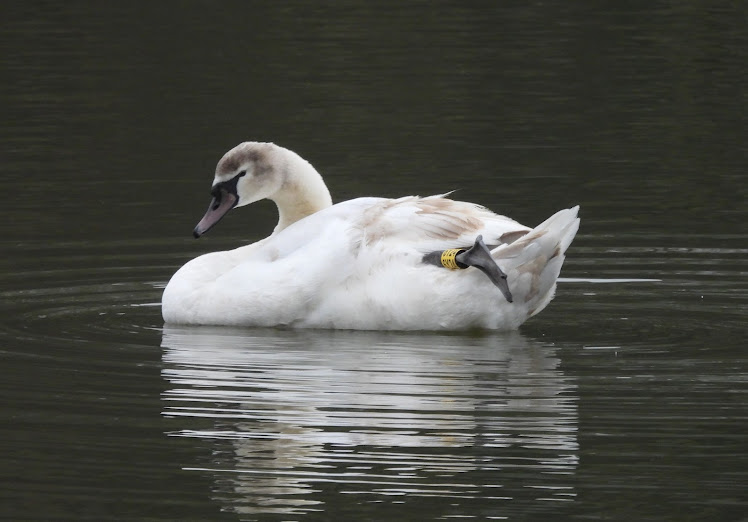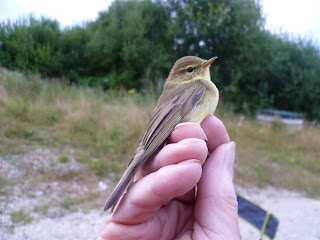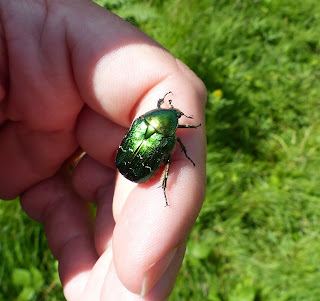The weather this week has been super, with lots of sun and temperatures in the low 20s, so I thought it would be a good idea to have a few hours down at Linacre to see which insects were about. I've been down twice this week, and have managed to see 9 species of butterfly, 3 species of dragonfly, 2 species of damselfly, 4 species of bee and at least 9 species of hoverfly.
The butterflies seen were:
Peacock (5; 3 on buddleia by the middle reservoir and 2 on buddleia in the ringing site),
Red Admiral (2 on buddleia in the ringing site),
Small Copper (2 battling males on Ragwort on the wall of the middle reservoir),
Meadow Brown (5 all around the site),
Gatekeeper (2 at the bottom of the top reservoir),
Comma (1),
Large White (10 all around the site),
Green-veined White (1 male) and
Speckled Wood (7 around the site).
Red Admiral
Speckled Wood (underwing)
The 3 dragonfly species seen were
Brown Hawker (at least 5 flying around the site, mainly on the top reservoir),
Migrant Hawker (2, flying around the bottom of top reservoir dam wall) and
Common Dater (1 male basking on the boardwalk by the top reservoir on the 18th- the first record of 2016).
Common Darter
The two damselfly species seen were
Blue-tailed and
Common Blue Damselfly.
Blue-tailed Damselfly
Common Blue Damselfly
The bees seen were: Tree, White-tailed, Red-tailed and Carder Bee (Common, I think).
Tree Bumblebee
Common Carder Bee
At the start of the post I mentioned I'd seen at least 9 species of hoverfly. I say at least, because I'm sure there were more there that I couldn't identify! Anyway, I'm going to write another post about hoverflies, so here's a picture of one of my favourite species, Volucella inanis to be going on with.
Volucella inanis
As well as the insects, I also saw the immature Shag again (now into it's 9th month!!), 1 juvenile Cormorant, 14 Mandarin Ducks, 43 Mallards, 7 Great Crested Grebes ( 3 adults and 4 juveniles), 1 Grey Heron, 4 Grey Wagtails, 18 Tufted Ducks, 5 Coots ( 3adults and 2 juveniles), 5 Moorhens ( 3 adults and 2 juveniles), 12 Swallows, a group of c.50 House Martins and a young Common Toad, my first adult toad at Linacre.
Common Toad






















































